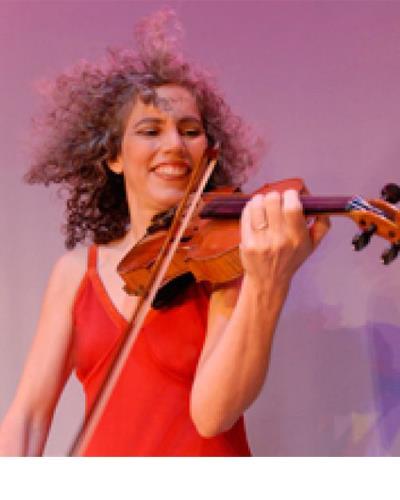Alicia Svigals presents a guide to performing traditional Jewish folk music

In the April issue, violinist and composer Alicia Svigals (right) hands on tips on performing klezmer, the traditional celebration music of East European (Ashkenazic) Jewry. To supplement her Masterclass article, here are six videos in which Svigals demonstrates the ornamentation and rhythmic variations described in the text:
Running
semiquavers
Running quavers or semiquavers are often played in groups of two to
a bow, a little faster than their notated value. Each pair is
followed by a tiny silence to make up the difference before the
next pair, which must begin right in time again. How ‘rushed’ those
pairs are can and should vary.
Playing the
zhok
The three quavers at the end of the 3/8 zhok (or hora)
figure are played rushed, followed by a little silence before the
down beat comes in again. This happens both in the band's rhythm
section and in the melody.
The
krekhts
The krekhts is unique among ornaments – there is no other tradition
in the world with anything similar – and it is in a way the essence
of the klezmer sound. Beginner klezmer players often find it
mysterious, because it is so unlike any grace note they have
encountered before: it is placed at the very end of the note
instead of the beginning.
Slides
Klezmer fiddle playing is full of very short, subtle slides, which
fill in the space between two notes rather than playing them
cleanly. Mostly downward slides, they can be just a quarter-tone
long, filling in the space for instance between an E flat on the D
string and the open D, but they make a big difference.
Bends
Violinists, like clarinettists, will often add excitement to long
notes by slowly bending the pitch down (by leaning the finger
backwards) and then back up again. It should be as gradual as
possible to create maximum tension. Sometimes a series of repeated
notes are changed to one long, slowly bent note.
Trills
Klezmer fiddling doesn't utilise pure vibrato; instead, a half-step
(or smaller) trill is used, which can be vibrated at the same time
(keeping the two fingers together and vibrating, so the higher
finger hits the string with each movement forward of the hand also
does the trick).
Readers of The Strad’s digital edition will find hyperlinks to all six videos embedded within the text of the article. Download the April issue here, or get The Strad App for iPads, smartphones and tablet computers.
Photo: Tina Chaden







































No comments yet